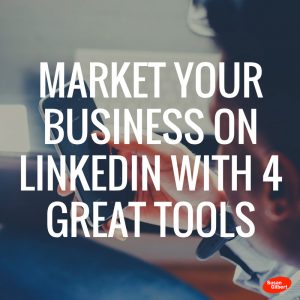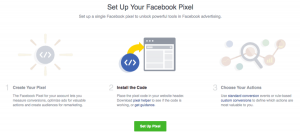It’s no surprise that the internet has changed the way we live, work and consume. Before we buy anything these days (online or in the store) most people read about it online. Actually, that’s no longer a trend, but the typical path towards making a purchase.
There are plenty of statistics to confirm this new habit. 90% of consumers read online reviews, and 88% of them trust the reviews found online as much as they do personal recommendations.
No matter what you’re selling, from apps, to shoes, to gardening tools; everything can be reviewed online. Which means a high number of buyers offering feedback has now become an essential part in any marketing strategy. So, if you haven’t caught on yet, you need to start using social proof to gain visibility, and increase your credibility and conversion rate.
The Power of The Crowd
Social proof works best by building a large community around your product. The higher the number of people who have bought from you, the better your chances of converting a casual browser into a customer. This happens because people often like to feel part of a group and tend to copy behaviors and attitudes to make sure they fit in.
Psychologist at Arizona State University, Robert Cialdini, affirms “people don’t recognize how powerful the pull of the crowd is on them.” And this power can work in your favor. People are more likely to change their habits if they know their neighbors have already done it, than if they have the chance to save money.
Harnessing social proof to build a marketing campaign is about knowing how to use these reviews to your advantage. It’s easy to implement positive comments to your website, purchase form, or social media, but people like transparency. So highlight good reviews by all means, but don’t manipulate or delete the bad ones.
Add stories if possible, as people enjoy reading about other people’s situations and needs. Finding out that a customer purchased your product for a baptism and that the visitors were simply thrilled is more meaningful than a 5-star review.
A Picture Speaks a Thousand Words
60% of consumers admit that they’re more likely to consider a business with images in local search results. And this is just one example of what pictures can do for your business.
People respond better to photos, and articles with images get more views and almost always generate more engagement. So use this tool to build quality social proof:
• Product Reviews: Encourage your customers to add some relevant pictures of your product; while they’re using it or just what it looks like out of the box. Potential customers can identify themselves easier with your clients if they can see them using your product.
• Testimonials: People like to see real people on the web and tend to have more trust in statements that have a face next to them. If you work in B2B, a logo from a recognized company can be just as powerful.
Work Your Influencer Marketing
Influencer proof is another form of social proof that can improve your company’s image with existing and potential customers. This strategy works well because people are tired of traditional publicity and skeptical of hearing the same message over again.
Big brands (with big budgets to match) tend to use celebrities or keynote speakers, but international stars aren’t the only way of raising popularity. There’s plenty of opportunities out there for small businesses with limited budgets for marketing.
Finding the right influencers and inviting them to speak for you or review your product is a great way to gain more visibility. Which means that more people will start talking about you and purchasing your products. If you sell skin care products, check out local athletes or beauticians. If you make baby wraps, look for respected Mom bloggers.
Before starting your campaign, set clear goals and choose influencers who are relevant for your business. Analyze their message and values, to make sure they share the same principles as your company. Check out their followers and how well they match your buyer personas. Then let them adapt your content to their audience.
Treat your influencers like partners and you’ll get some great advocates for your business. And as with any campaign, be sure to periodically check the results.
Consumer Reviews Are Vital
So vital in fact, that around 85% of consumers admit to reading up to 10 review before making a purchase. Ideally, you’ll have peer reviews on your company’s website and on independent review sites. Customer reviews should be easy to find on your site — even right on the homepage — so people have immediate contact with what others have to say.
Many companies dedicate large spaces to reviews and testimonials on their landing pages, to gain trust and lower bounce rate. This is a great idea, but not always enough to convince the savviest consumer.
Many potential customers look for further information on a neutral platform that the seller can’t control. This is how online product review sites have gained in popularity, with visitors seeking accurate and honest information about products.
People don’t just read a buyer’s guide containing technical details about a product here, but also information based on thousands of reviews from actual users. Which Laptop analyzes over 375,000 independent reviews to provide an unbiased assessment of the best product available.
Consumer Essentials uses an API connected to Amazon, that pulls through data, such as product reviews and images, and calculates an individual score for each product. They then publish the best ten in any category. This is an excellent way for consumers to get pre-filtered reviews and find the best products without making their own calculations.
Many companies send products for review, but there is no payment for reviews taken to ensure that customers still can get an honest opinion, and no company can manipulate results.
Low Social Proof Is Worse than No Social Proof
With customers more predisposed to listen to other customer experiences, it’s easy to see the power of social proof. But you need to make sure you harness that power to work for your company and not against it. Low social proof for example, is worse than no social proof at all.
What does this mean? If you have a Facebook page with just ten fans, you last updated Twitter in 2012, and only have one customer review to show, it’s best to deactivate them completely. Such low social proof will do more harm than good and make a shrewd consumer do a 180.
The Takeaway
Start using social proof as marketing tool when you have something to show. Focus on other strategies while you’re waiting for numbers to grow, such as building a landing page where you highlight your strengths instead of weaknesses. With time and the right marketing strategy, you’ll soon build up enough reviews and social proof to make your numbers count.
Digital & Social Articles on Business 2 Community(12)







